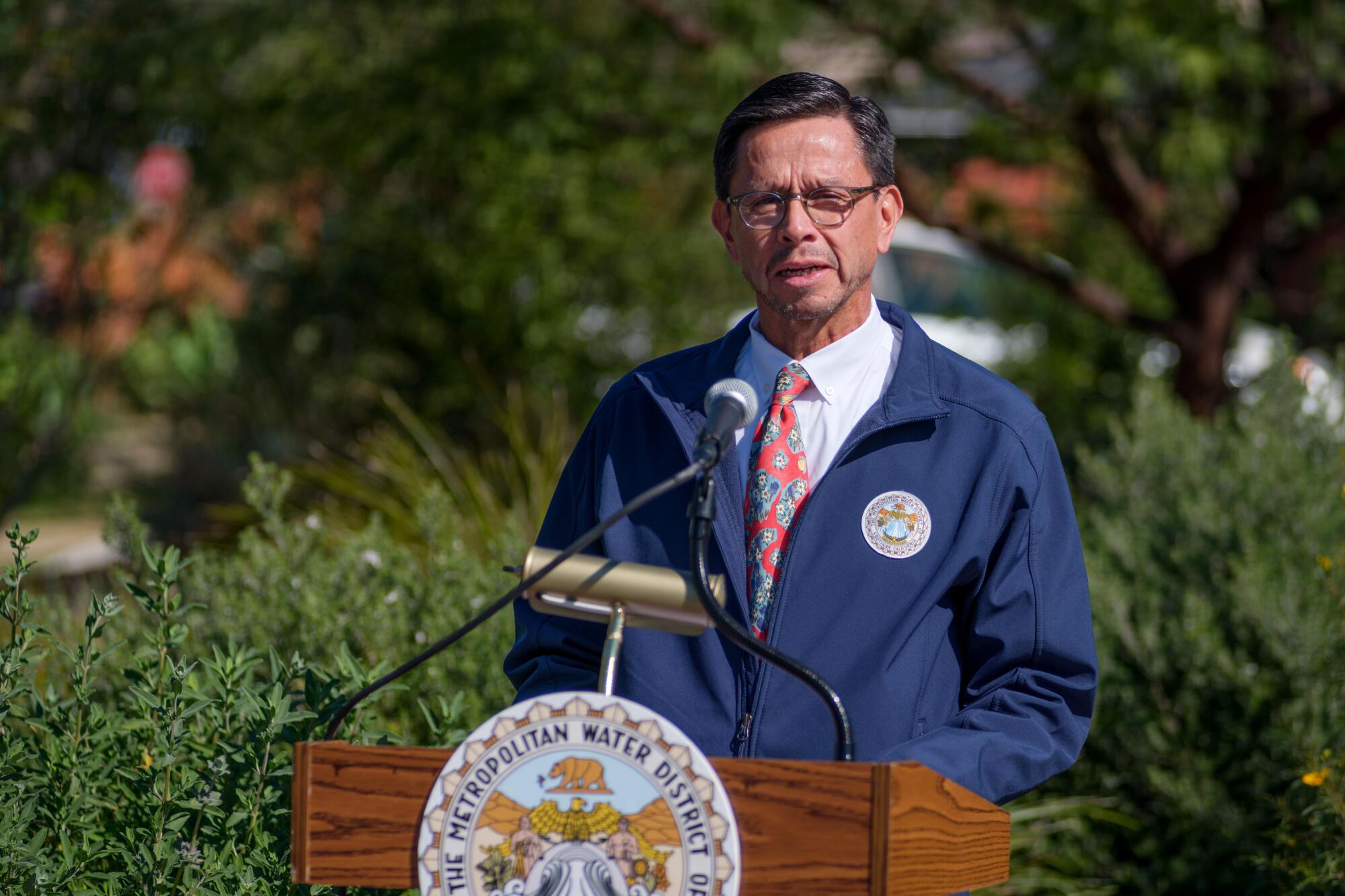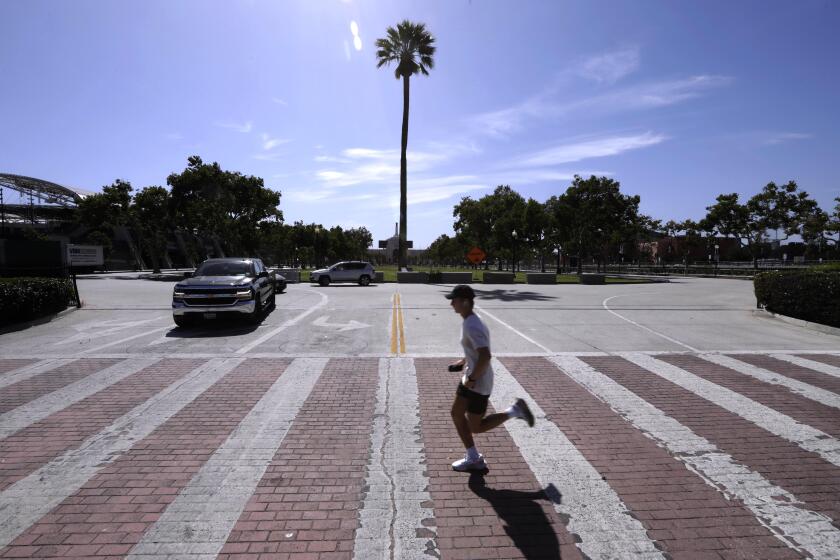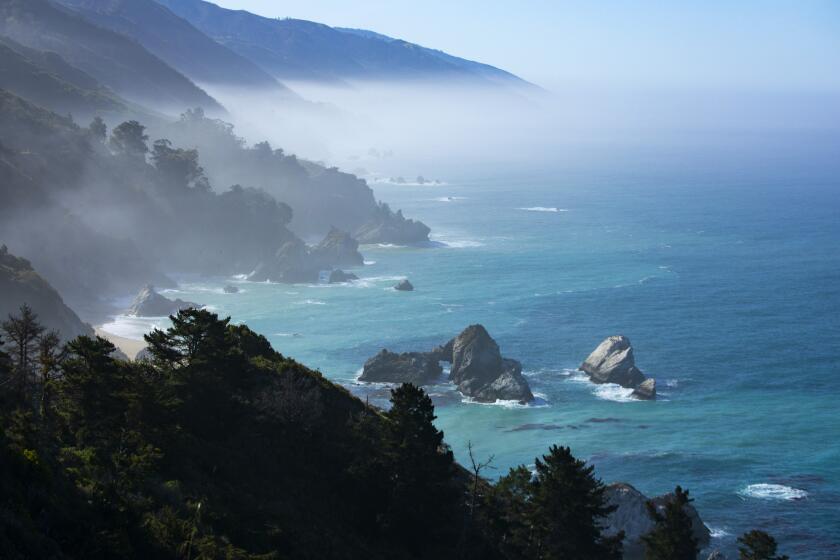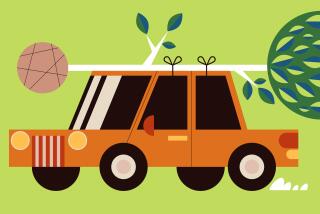
- Share via
With many areas of Southern California starved for shade, the region’s largest water supplier has launched a rebate program offering residents and businesses up to $500 as an incentive to plant trees.
The Metropolitan Water District of Southern California on Tuesday announced the addition of the tree incentive to its long-standing turf-replacement program, which offers cash to property owners who rip out water-guzzling grass and replace it with drought-tolerant landscaping.
Aggressive and impactful reporting on climate change, the environment, health and science.
Starting this week, new applicants can seek a $100 rebate for each eligible tree planted — up to five trees total — as part of their turf-replacement project, according to a spokesperson for the district. Qualifying residents will also receive $3 for each square foot of grass lawn they replace with native plants, up from $2, due to a federal grant. The higher rate will last until the grant runs out, officials said.
Adán Ortega Jr., board chair for the MWD, described the tree rebate as “part of our environmental commitment” during a news conference held at a Van Nuys home where residents used the turf-replacement program to plant a sustainable garden.
“We are encouraging our communities to replace grass they don’t use with plants and trees that save water and create important habitat for our wildlife, like birds, bees and butterflies,” Ortega said. “By incorporating more trees into our community, we’re helping to add to the urban tree canopy, which helps to cool our neighborhoods and use less water.”
The Metropolitan Water District serves portions of Los Angeles, Orange, San Diego, Ventura, Riverside and San Bernardino counties and is the largest supplier of treated water in the U.S.
An urban tree canopy is defined as “the layer of leaves, branches and stems of trees that cover the ground when viewed from above,” according to the Center for Watershed Protection.
Besides providing a respite on hot days, trees clean the air, sequester greenhouse gases, alleviate strain on the urban drainage system and prevent soil erosion, Ortega said, adding, “and, of course, trees are beautiful.”
Cities are being urged to expand their urban tree canopy to mitigate the effects of climate change, but some are replacing mature shady trees with palms.
While Southern California is known for its ample — sometimes punishing — sunshine, shade is not accessible equally throughout the region.
At a glance, the city of Los Angeles appears to have robust leafy coverage, but the reality is more complex, according to a report on the county’s tree canopy assessment using 2016 spatial data.
The 2016 imagery showed that 25% the city land area was covered by tree canopy. However, just five block groups — in Pacific Palisades, Brentwood, Loz Feliz and Shadow Hills — contain 18% of the city’s total tree canopy. Less than 1% of the city’s population lives in those areas, the report states.
“Some residents live virtually in a forest while many others live in virtually treeless environments,” the report concluded.
Daniel Berger, executive director of operations for TreePeople, a local nonprofit focused on stewarding the urban environment, said the tree incentive could enhance equity.
“The rebate program is particularly crucial for under-served communities, the least affluent communities that carry the heaviest environmental burden,” Berger said at Tuesday’s news conference. “It provides a means to make changes that might otherwise be unaffordable.”
Officials announced the rebate in honor of Cindy Montañez, who was a San Fernando City Council member and chief executive of TreePeople before her death in October.
Ortega said Montañez had the idea of adding an incentive for planting trees when people remove their lawns while drafting a drought resolution for the city of San Fernando in 2022.
“She noted that many trees died in the previous droughts, when people stopped watering their lawns or ripped out their turf,” he said. “The lack of trees in turn exacerbates hot and dry conditions by spurring what’s commonly called the heat island effect.”
A program that allowed Californians to check out free passes to state parks at their local library is in jeopardy as the state contends with a budget deficit.
Not all trees qualify for the program. Ineligible are all palm varieties, woody plants used to create hedges, weeping trees with soft branches that touch the ground, certain invasive species and trees that don’t provide sufficient shade or are pruned to reduce their canopy, according to the district.
The MWD has compiled a list of recommendations for small, medium and large trees native to the state, available on its website.
Krista Guerrero, an MWD resource specialist, said the agency would particularly love to see residents plant the coast live oak.
“In terms of tree superstar in Southern California, the oaks really take the top prize just in terms of their ability to sequester carbon, to cool the air around us, and they do require very little water,” she said.
The MWD has offered a turf-replacement program “mostly on, but off and on” for more than 30 years. The current version rolled out in 2019, according to Guerrero.
The latest incarnation added requirements to include a stormwater feature, mulch around plants and permeable hardscapes, as well as other changes.
“It’s always been about saving water, but now, in addition to saving water, we’re really focused very heavily on what are the other co-benefits that these landscapes can provide,” Guerrero said.
Since the program’s inception, 218 million square feet of grassy lawns have been transformed into drought-tolerant spaces, she said.










